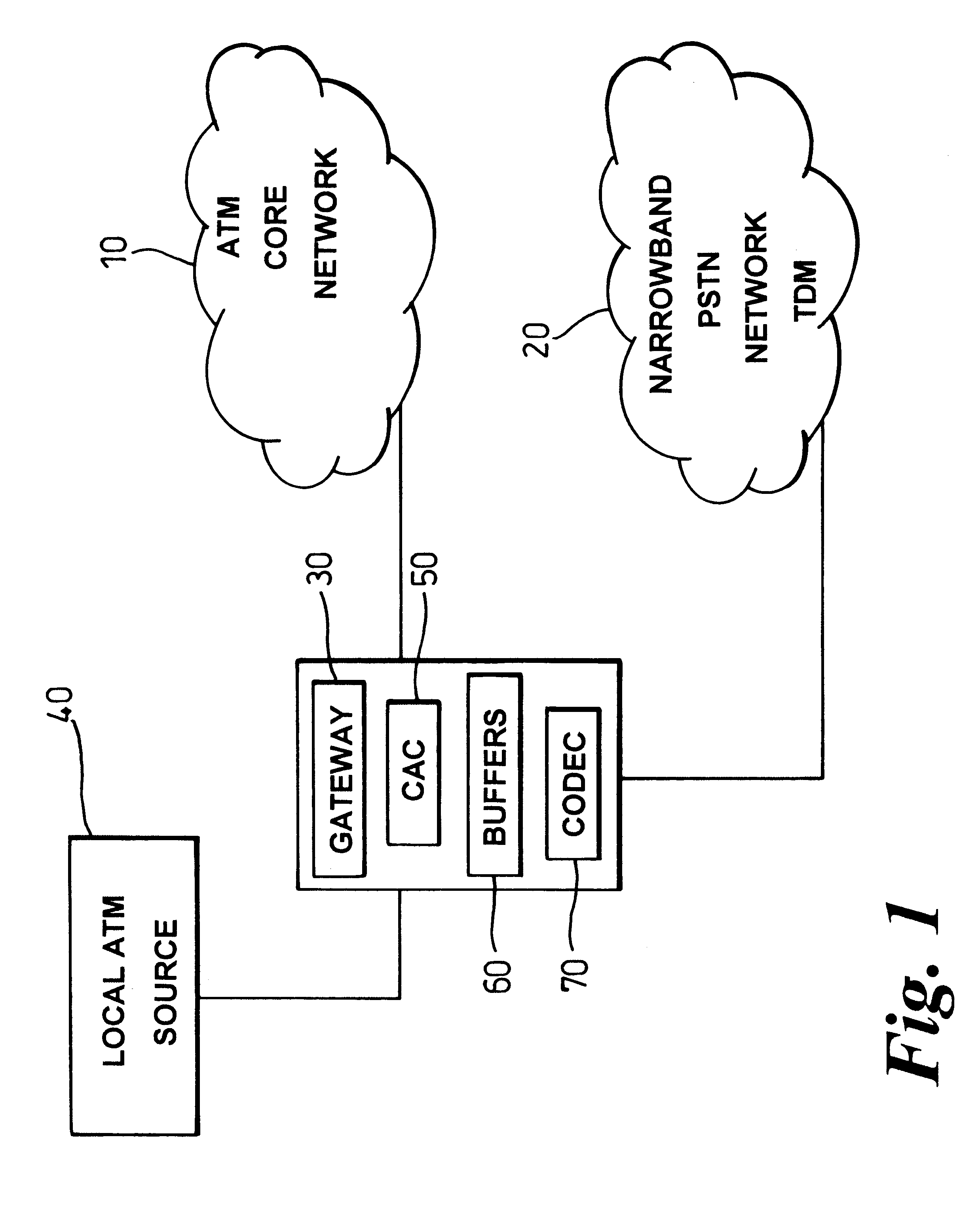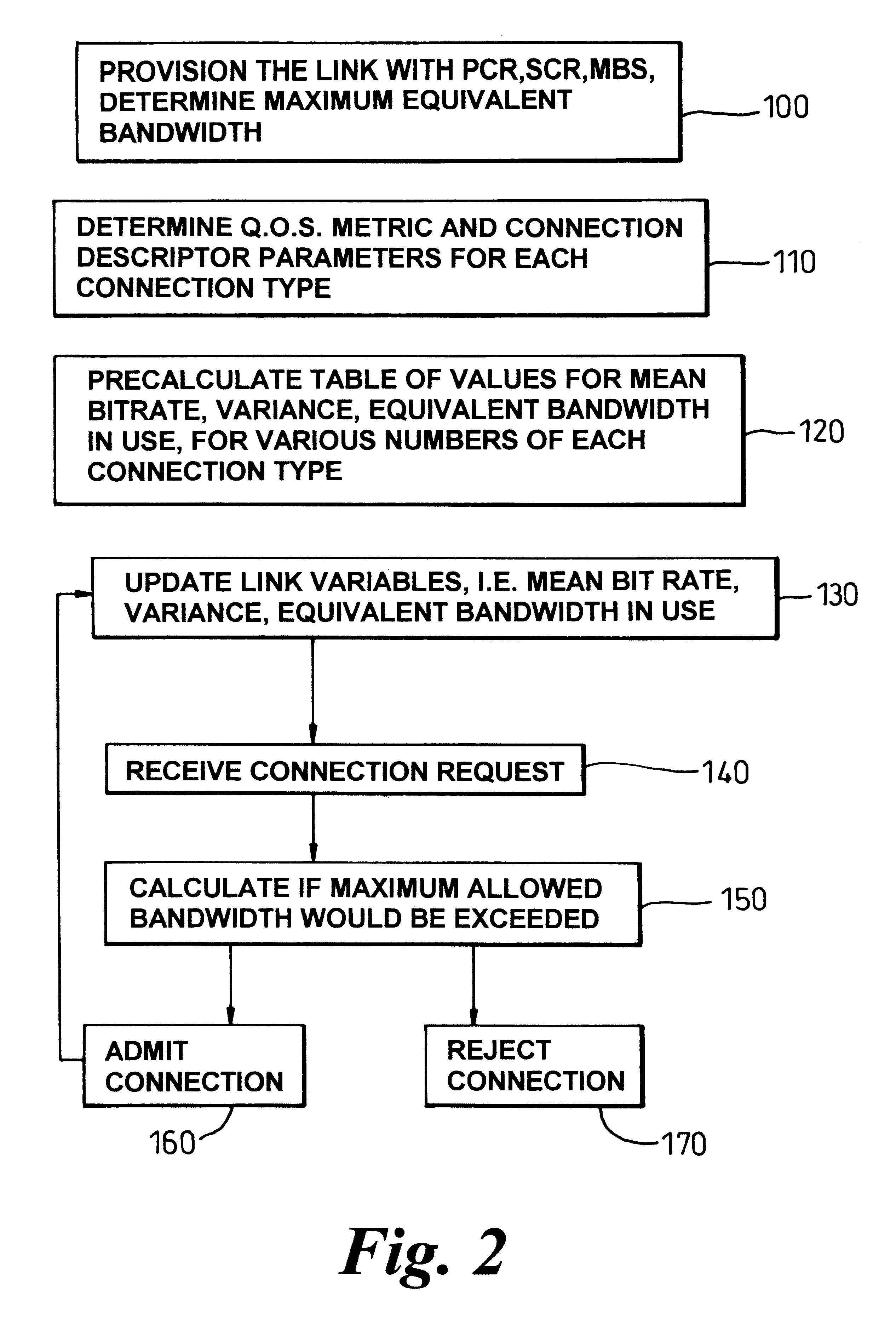Control of distributed allocation of channels
a technology of distributed allocation and channel allocation, applied in the field of connection admission control, can solve the problems of no mechanism to prevent or recover, information loss, and risk of channel being simultaneously allocated by both ends of different information flows
- Summary
- Abstract
- Description
- Claims
- Application Information
AI Technical Summary
Benefits of technology
Problems solved by technology
Method used
Image
Examples
Embodiment Construction
, VARIATIONS
Although the described examples use a sequential list in accessing the CID database, CIDs could be searched in any order, evan a random order, if they were tagged to indicate which are allocatable by one end, which are allocatable by both ends and so on.
Although the described examples use a predetermined look-up table, it is possible to make the CAC algorithm reactive, by updating or adjusting the table entries, by recalculating using measured values of parameters such as load, quality of service, and so on. Such a recalculation need not involve time-consuming iterative methods, since the equation is solvable directly, when some variables are replaced by measured values.
Other variations of the described embodiments, and other applications of the invention can be conceived and are intended to be within the scope of the claims.
PUM
 Login to View More
Login to View More Abstract
Description
Claims
Application Information
 Login to View More
Login to View More - R&D
- Intellectual Property
- Life Sciences
- Materials
- Tech Scout
- Unparalleled Data Quality
- Higher Quality Content
- 60% Fewer Hallucinations
Browse by: Latest US Patents, China's latest patents, Technical Efficacy Thesaurus, Application Domain, Technology Topic, Popular Technical Reports.
© 2025 PatSnap. All rights reserved.Legal|Privacy policy|Modern Slavery Act Transparency Statement|Sitemap|About US| Contact US: help@patsnap.com



